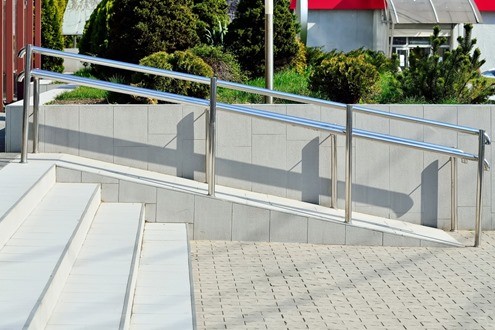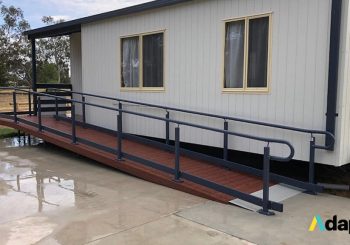Disability ramps that are designed or constructed poorly can prove to be dangerous for the ramp user as well as the caregiver.
Disability ramps that are designed or constructed poorly can prove to be dangerous for the ramp user as well as the caregiver. If you are considering getting a wheelchair ramp installed on your property and have conducted some research online, you will find that there are different types of products on the market. The two main categories of ramps are:
Permanent Ramp
When you are getting a permanent ramp installed, it needs to be in line with local building codes regardless of whether it is being constructed on a commercial residential property. A permanent ramp is one that is assembled and constructed on site and is left there till the time it is in this assembled or demolished. Some common problems with these ramps include:
- Permanent ramps can sometimes have excessively uneven or steep slopes
- They may have improperly supported landings and slopes
- The features may not have side barriers for railings.
Portable Ramp
A portable ramp is one that is generally put in place for a certain period and can be removed once it has been used. But these ramps too need to be in line with ADA guidelines. Some common problems related to temporary ramps include:
- The length of the ramp might be too short which makes the slope very steep
- Instability
- Improper anchoring can cause the ramp to slip off an elevated platform like a porch or entrance
Regardless of the type of ramp, the feature needs to be firm, stable and slip-resistant. This is why it is important to get detailed information about different types of ramp products and what their pros and cons are, before making your final choice.
Important Aspects to Keep In View
Some of the aspects that need to be kept in view while constructing a ramp include:
- Rise – Typically a portable ramp should have at least one foot of surface for a rise of every 2″. However certain power wheelchairs or mobility devices might have certain maximum slopes that they can climb. This means the user needs to decide whether the ramp is safe for them to use.
- Length – You can get a ramp of any length constructed, based on the layout of your property and your specific requirements. But the rise of any single run/section should not exceed 30 inches; this translates to 2 30 feet of length. Any permanent ramp that exceeds its length would need a levelled landing area which would be the resting space. When there is a limited amount of space on a property, these landings become the ideal location to change direction such as 180-degree or 90-degree. If the angle change is 180-degrees, your landing would have to be twice as large compared to the 90-degree angled landing.
- Maintenance – This is one more aspect that needs to be taken into account while constructing a wheelchair ramp. In fact, it’s a very important aspect, because the material used in constructing the ramp should be able to endure changes in climate and maintenance should be easy.
- Width- The ramp should have a width of 36 inches as this would accommodate most walker users, wheelchair and mobility devices. However, if your wheelchair is extra wide or even if it has some accessory attached to it, you would need a wider ramp.
In addition to all of these things, it’s vital to take future needs into account. For instance, if there is a possibility that there would be some change in the requirement in the future (wider wheelchair etc.), it’s necessary to consider this aspect while constructing the ramp.
Our team will provide you all the information you need about the different types of ramps and their specifications. We offer a wide variety of ramp layouts and options. You can call 1800 232 782 or contact Adapta through this form, and one of our representatives will contact you shortly.



